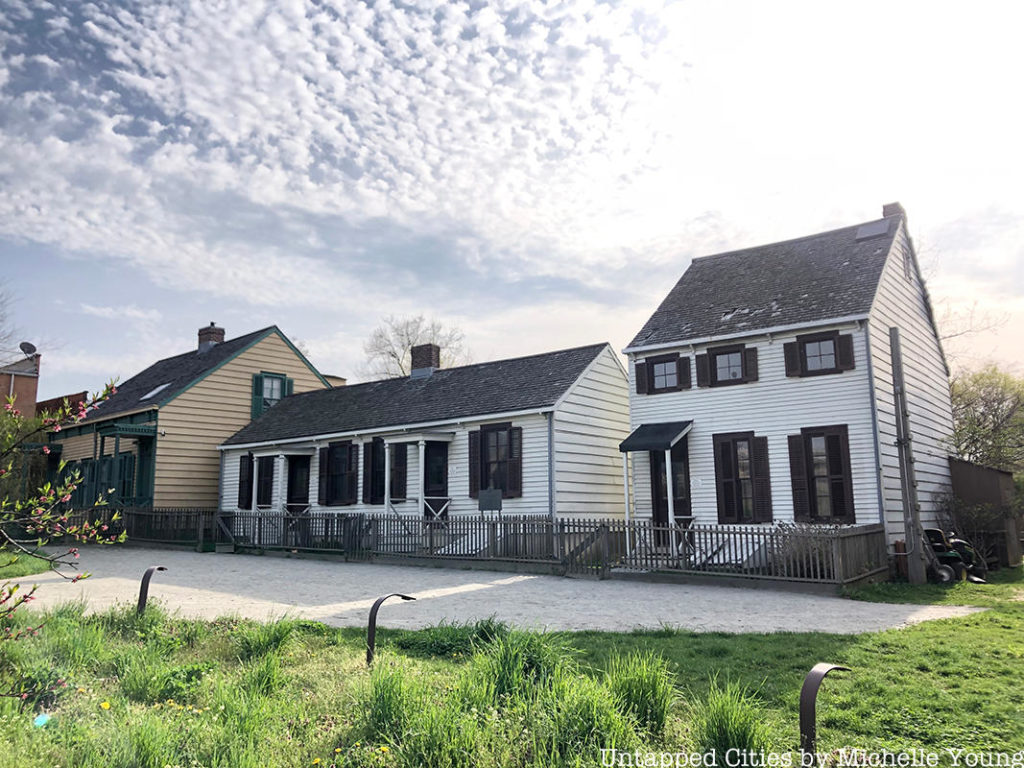2. Weeksville, Brooklyn

Weeksville was one of the largest free Black communities in the U.S. prior to the Civil War, located near present-day Crown Heights in Brooklyn. The Weeksville Heritage Center has worked to preserve the settlement’s history and teach the city about its significance. Free Black professionals first purchased land in the area shortly after the abolition of slavery in New York, growing into the second-largest Antebellum-era free Black community nationwide; over 520 residents called Weeksville home by 1855, more than double Seneca Village.
Henry C. Thompson, a leading Black community leader, purchased 32 lots from grocer Edward Copeland (who purchased the land from John Lefferts, whose family names Prospect Lefferts Gardens in Flatbush). Weeksville was officially founded in 1838 when an African American longshoreman named James Weeks bought two plots of land and built a home near what is now Schenectady Avenue and Dean Street. Weeks founded the community with others, including Sylvanus Smith near Bedford Hills, a rather secluded area that would allow Weeksville to flourish as well as be safe from racial prejudice. Quickly, the community grew, and sites such as Zion Home for the Aged, Howard Colored Orphan Asylum, and Bethel A.M.E. Church opened in Weeksville. About one-third of the men over 21 owned land, and the community included many outspoken abolitionists and equal rights activists. The community had one of the nation’s first African American newspapers, The Freedman’s Torchlight, and included Colored School No. 2, which after the Civil War would become the first integrated school in the country.
Weeksville became the national headquarters of the African Civilization Society, which worked to establish a free Black community in Liberia. Residents included Junius C. Morel, an accomplished journalist who collaborated with Frederick Douglass and other leading Black authors of the time. Susan Smith McKinney Steward was the first Black female doctor in New York, while Sarah Smith Tompkins Garnet was Brooklyn’s first female school principal who founded the Equal Suffrage League of Brooklyn. Some residents even moved to Liberia, though most practiced activism in their home community, about 40% of which was southern-born. It was a safe haven for Black New Yorkers during the 1863 draft riots as well. The community declined in the 1880s with the development of neighboring communities and the construction of the Eastern Parkway.
Today, a row of historic homes known as the Hunterfly Road Houses are the only four structures that fully remain from the community, as discovered in 1968 by James Hurley and Joseph Hays. Weeksville Heritage Center was opened in 2005, expanding in 2014 with a modern building. The Weeksville Heritage Center holds exhibitions, events, performances, and a Resource Center dedicated to the “histories of post-emancipation, freedom, and its promise” and historic understanding of 19th century and 20th century African American, Caribbean, and African history. In a quote in the Landmarks Preservation Commission designation report, Lorren McMillen, an authority on the 19th-century wooden architecture of New York City, stated that the Hunterfly Road Houses “are the last buildings in Brooklyn and in the rest of the city with the exception of Staten Island which as a group face on an old original undeveloped highway and retain all the charm of their rustic setting.”





